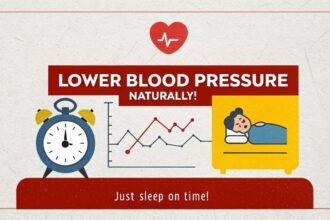If you’ve recently learned that your blood sugar levels are above normal but not high enough for a diagnosis of diabetes, you may have prediabetes.
For many Americans, this is a wake-up call and fortunately, one we can act on. With the right steps early, prediabetes often can be reversed, cutting off type 2 diabetes before it starts.
The U.S. Prediabetes Landscape: Why This Matters
Believe it or not, prediabetes is far from rare in the U.S. – in 2021, an estimated 97.6 million adults aged 18 and over had prediabetes, which is about 38% of U.S. adults.
What’s more concerning: over 80% of those individuals are unaware they even have the condition.
Meanwhile, rates of prediabetes have been rising between 2013 and 2020, prevalence among men went from 38% to 41%, and among women from 31% to 32% while awareness has crept up only modestly.
These figures make clear that many people are living in the gray zone of elevated risk without realizing it.
Why Action Matters: Evidence from the Diabetes Prevention Program
Prediabetes isn’t a life sentence – it’s a chance to course-correct.
The pivotal U.S. Diabetes Prevention Program (DPP), sponsored by the National Institutes of Health, showed that people with prediabetes who adopted healthier behaviors reduced their risk of progressing to type 2 diabetes by 58%, outperforming medications alone.
This finding has been repeatedly supported and forms the foundation for national prevention guidelines.
It underscores a powerful point: lifestyle changes are not just preventative they can be transformational.
Key Lifestyle Changes That Work
Here’s what the evidence-based recommendations and everyday experience tell us works best:
1. Move your body daily
Aiming for 30 minutes of moderate-intensity exercise (think brisk walking) on most days can improve insulin sensitivity, helping your body better manage blood sugar levels.
Even lighter activities gardening, dancing, or walking the dog also deliver benefit.
2. Shed 5–7% of body weight
You don’t need to be perfect. Losing just 5 to 7% of your current weight (for example, 4–6 kg if you weigh ~90 kg) has a strong impact. Excess fat – especially around the waist makes insulin less effective.
3. Eat smart
Focus your plate on fiber-rich foods, whole grains, legumes, vegetables, and lean protein. Reduce or eliminate sugar-sweetened drinks and processed foods, which push your pancreas to overwork. Smaller meals spread across the day help prevent big glucose spikes.
4. Prioritize sleep and stress relief
Chronic stress triggers hormone shifts that raise blood sugar; poor sleep disrupts insulin control. Work toward 7–8 hours of quality sleep nightly and adopt stress-management strategies – meditation, deep breathing, yoga or simply unplugging.
Screening & Getting Started: What U.S. Guidelines Say
Because early detection is key, the U.S. Preventive Services Task Force (USPSTF) now recommends screening asymptomatic adults aged 35 to 70 years with overweight or obesity for prediabetes and type 2 diabetes.
After a normal glucose result, testing every 3 years is often reasonable.
The logic is simple: identify people in the “gray zone,” then intervene early with proven behavioral programs that many health systems now offer or refer to.
Realistic Steps You Can Take Today
- Ask your doctor for an A1C (glycosylated hemoglobin) or fasting glucose test—especially if you’re 35+ and have a BMI above 25.
- If you’re diagnosed with prediabetes, enroll in a structured lifestyle-change program, sometimes called “prediabetes classes” or “diabetes prevention” programs.
- Begin to log your food, set modest movement goals, sleep routines, and stress-reduction habits.
- Get social support – partner with a friend or family member, or join a support group (in person or online).
The Bottom Line: You Have Power Over the Outcome
Prediabetes is not a label of failure – it’s a red flag, alerting you that your body is asking for help. It’s also reversible, in many cases.
The sooner you act, the better your chances of returning blood sugar to normal and sidestepping type 2 diabetes altogether.
For Americans, the stakes are high – nearly one in three adults is walking this path.
But the remedy is also within reach: move more, eat well, manage stress and sleep, and work proactively with your healthcare team.
Prevention isn’t passive – it’s your moment to step in, reclaim metabolic health, and outsmart diabetes before it ever begins.












